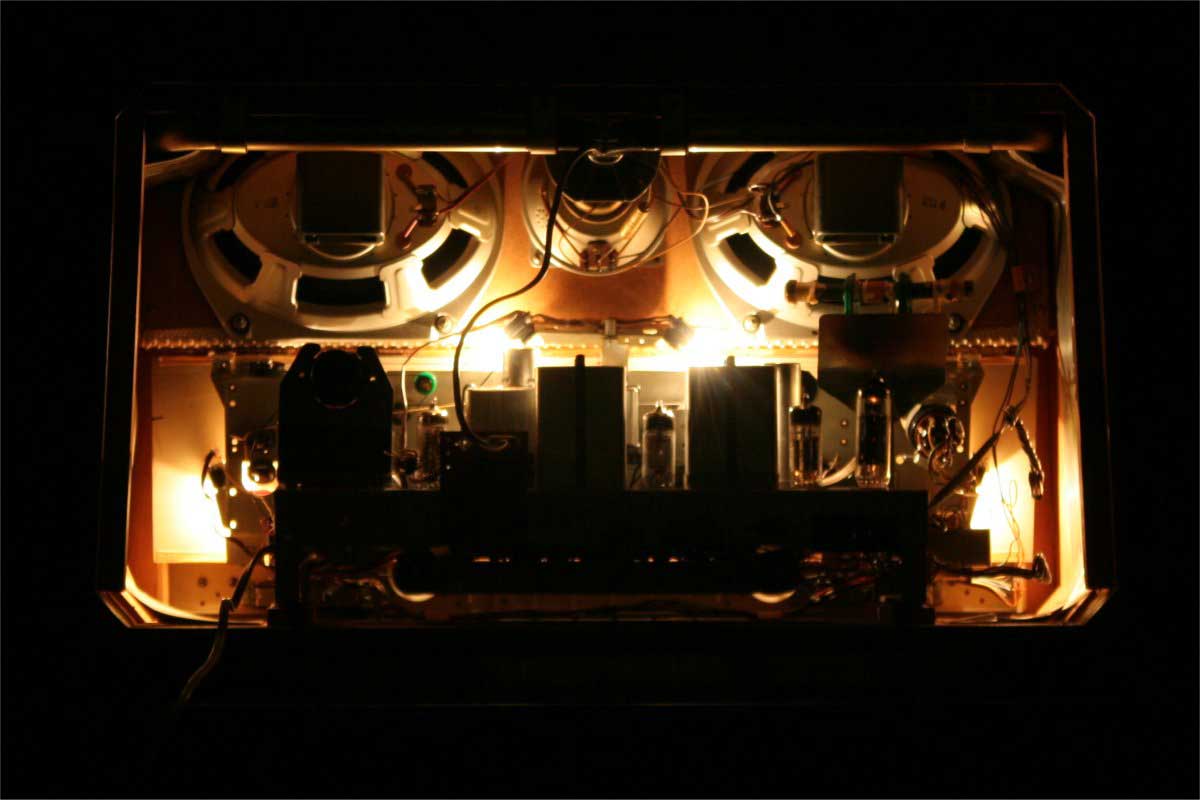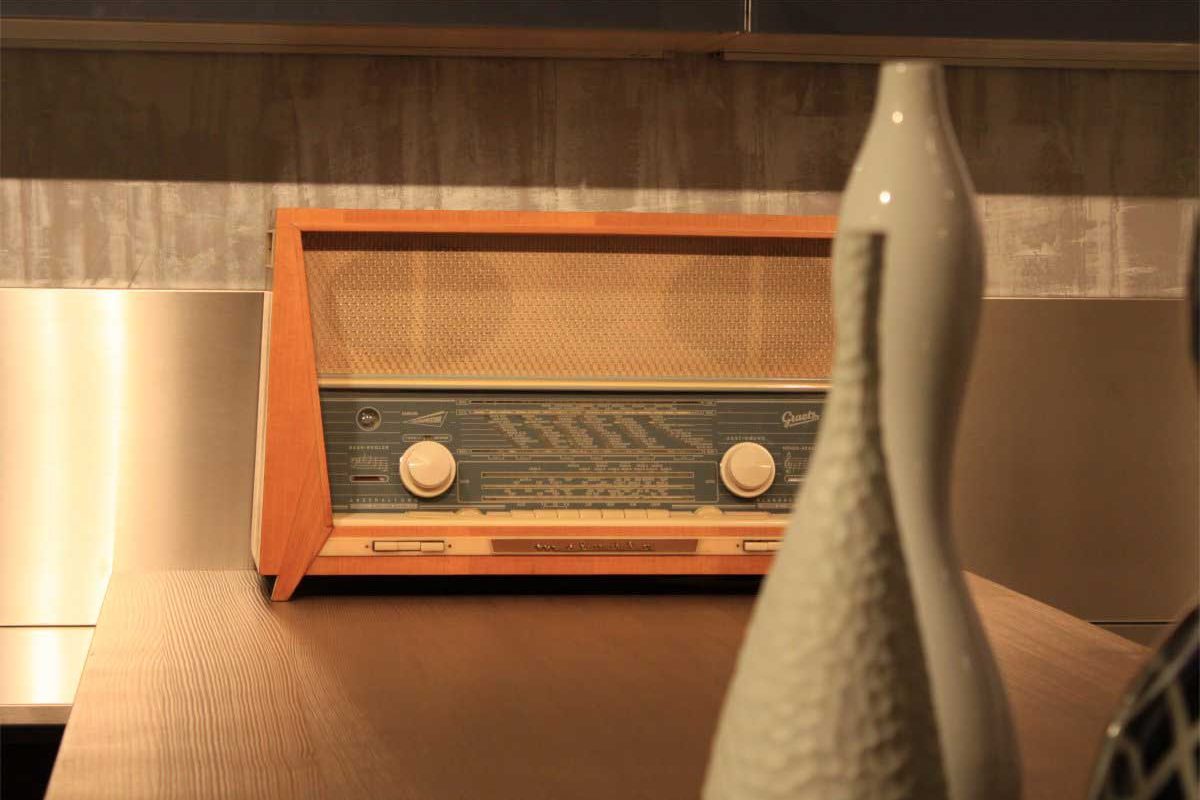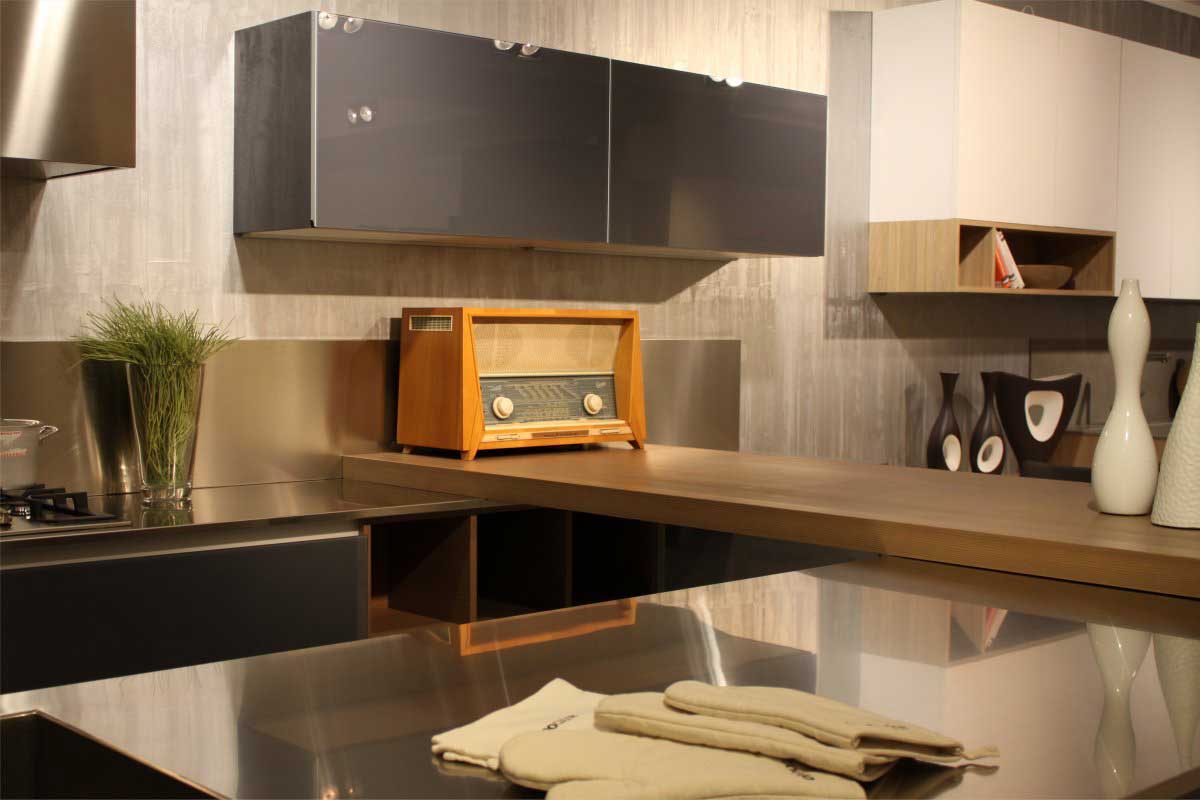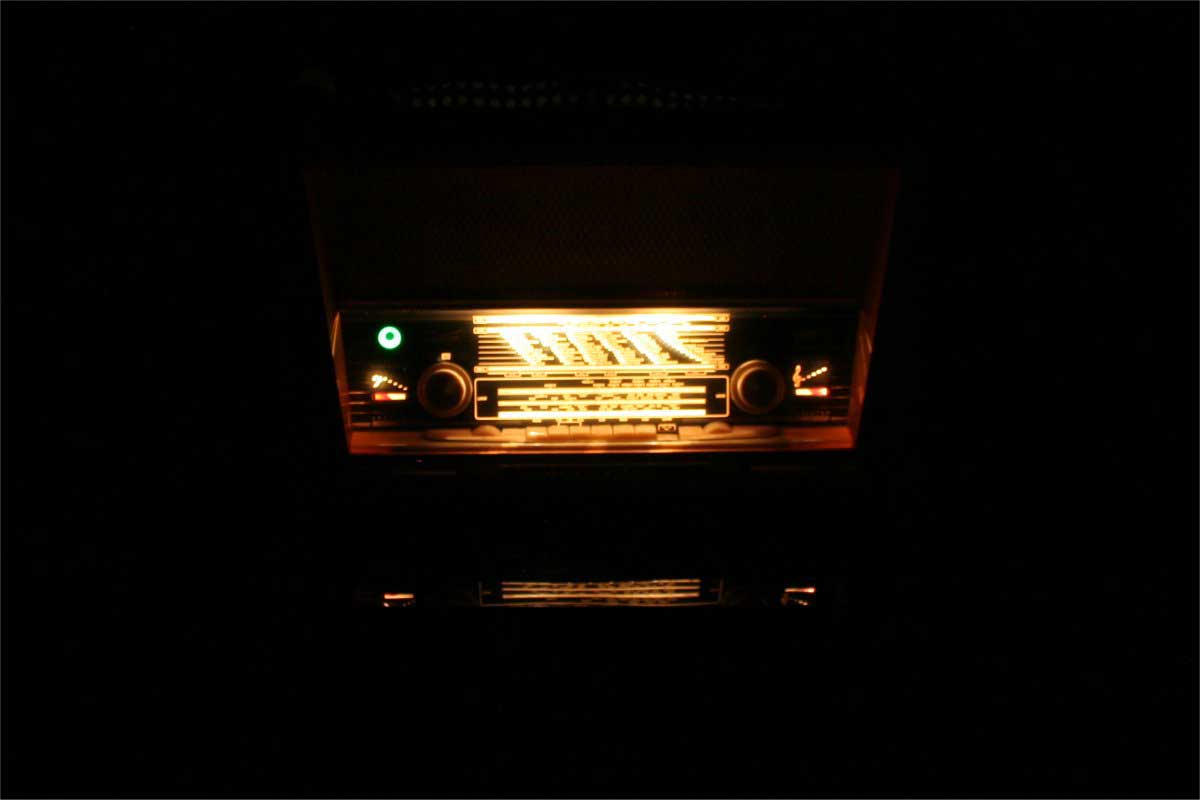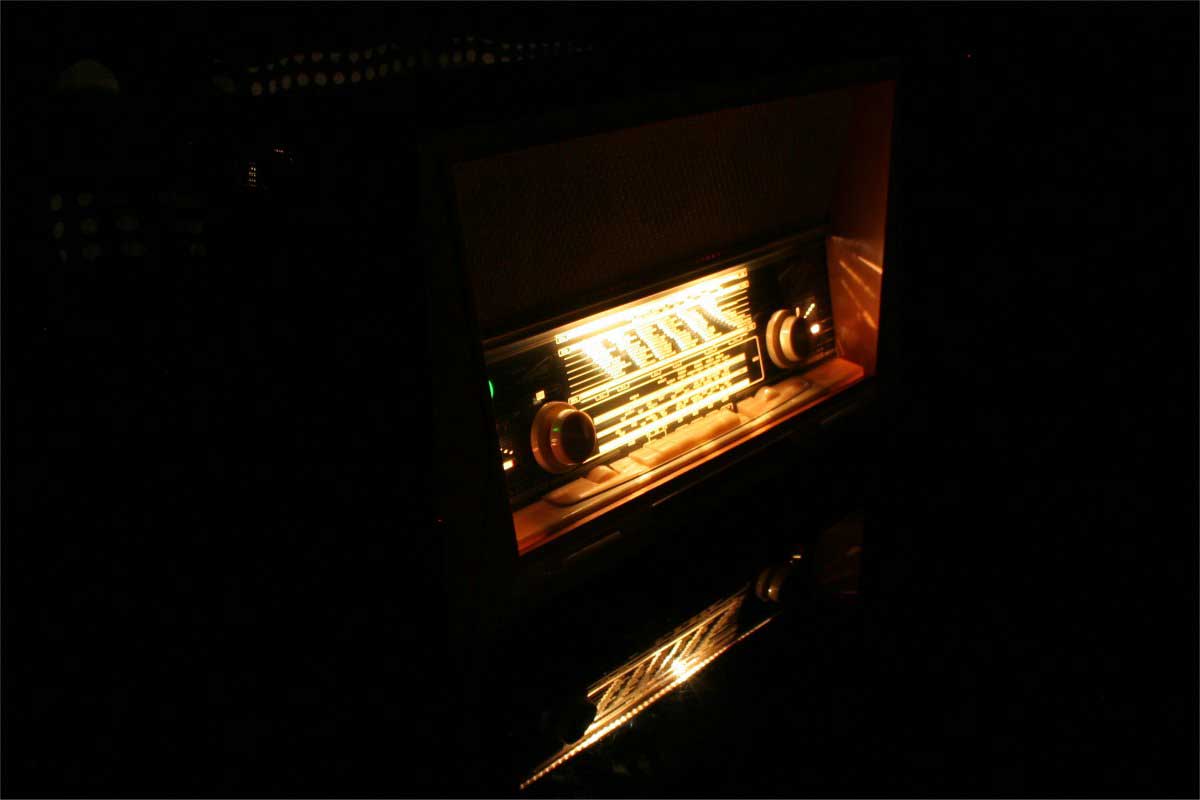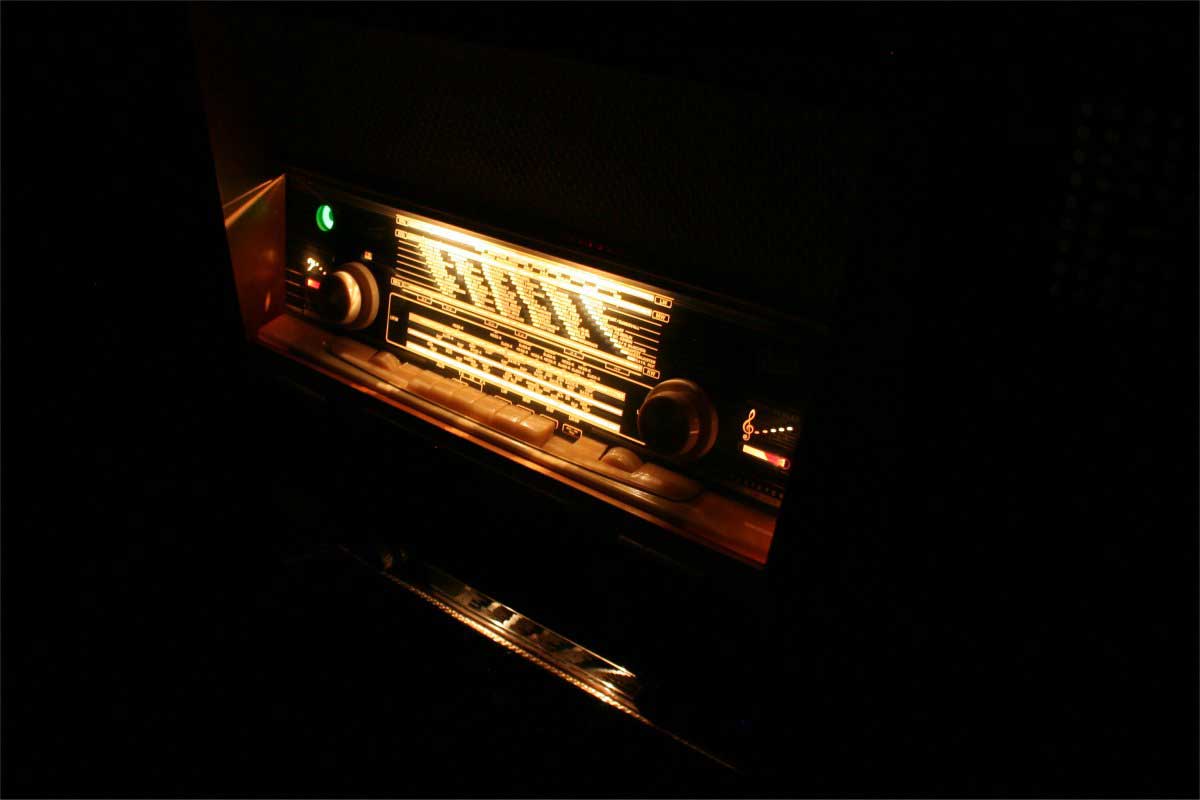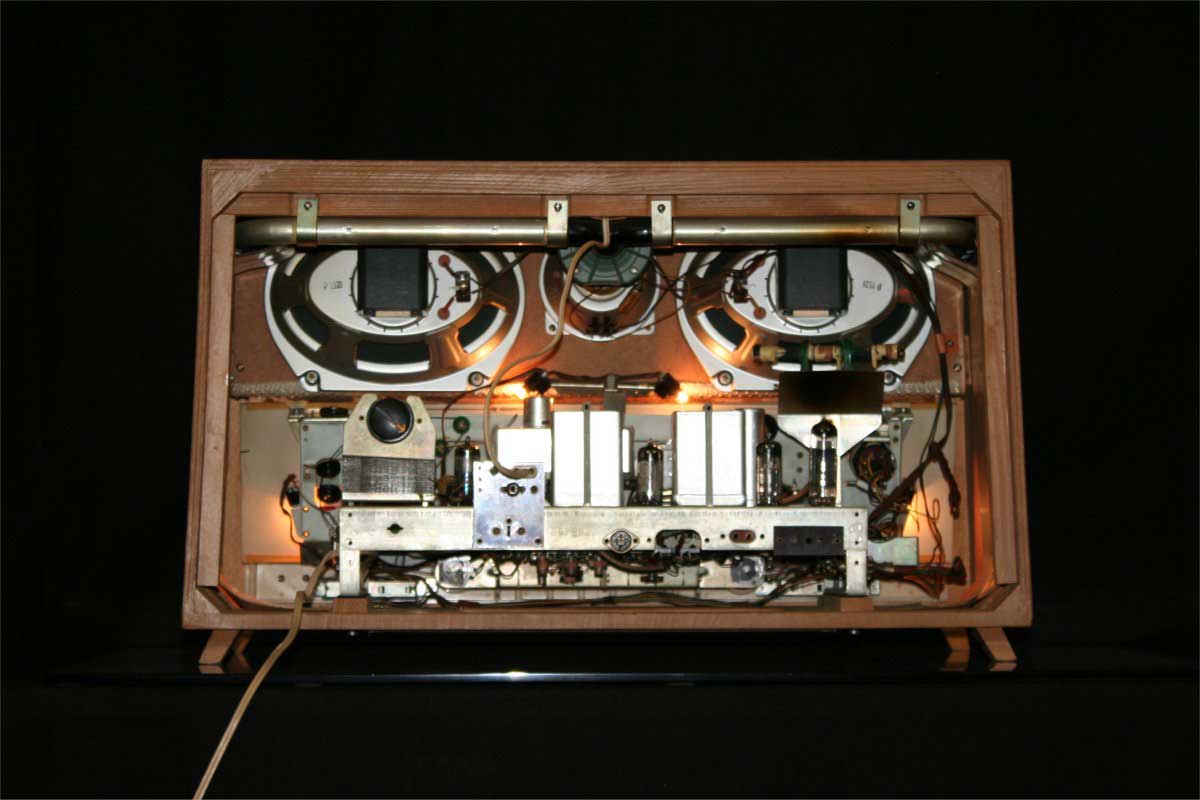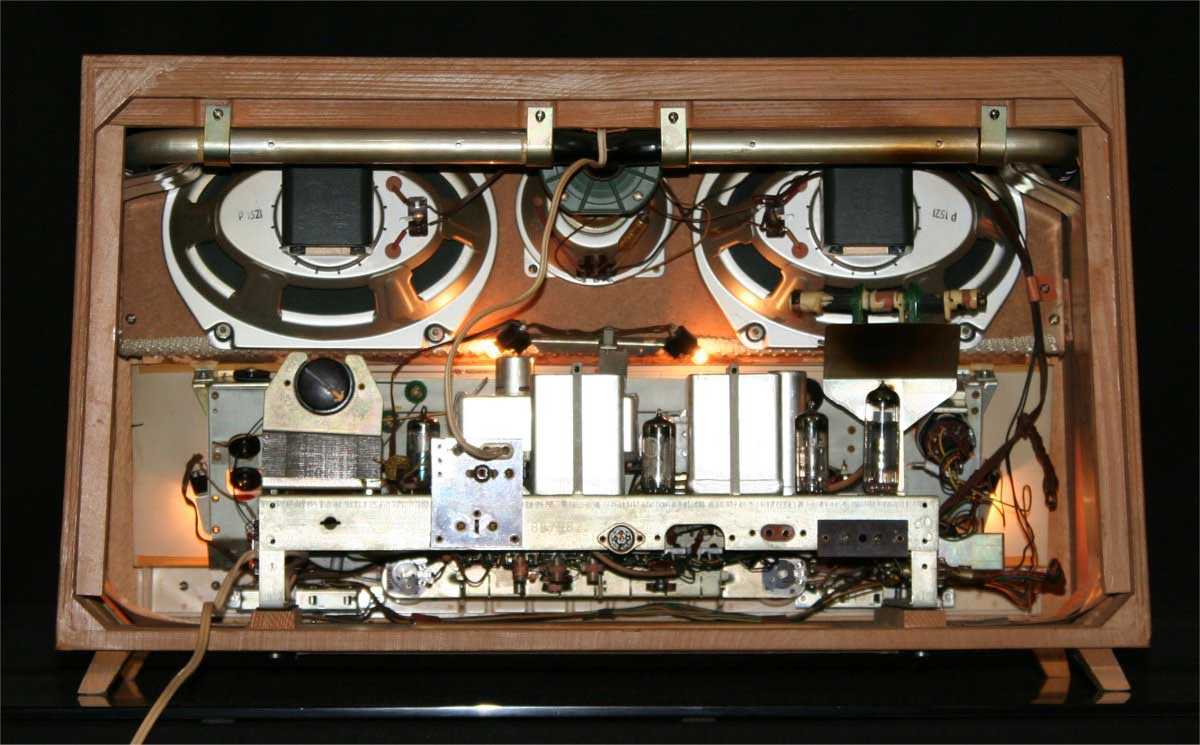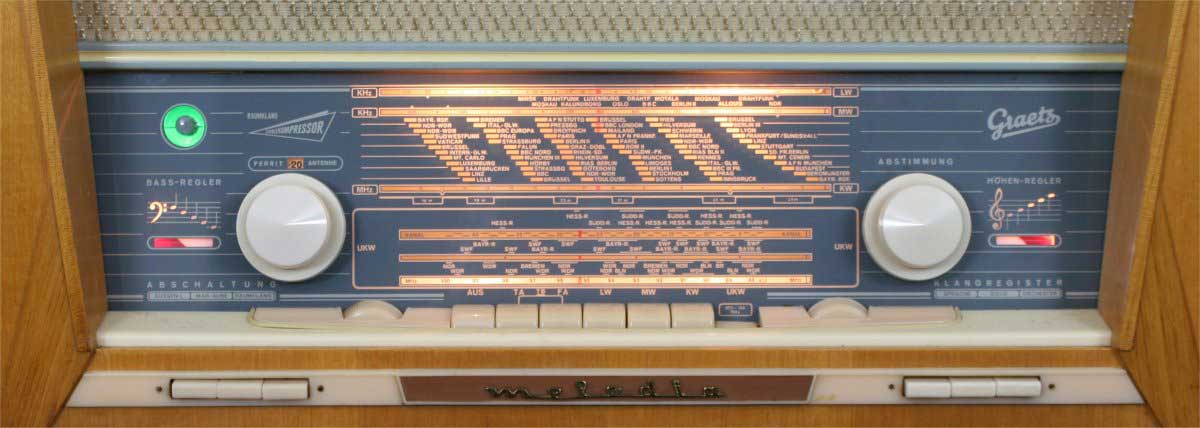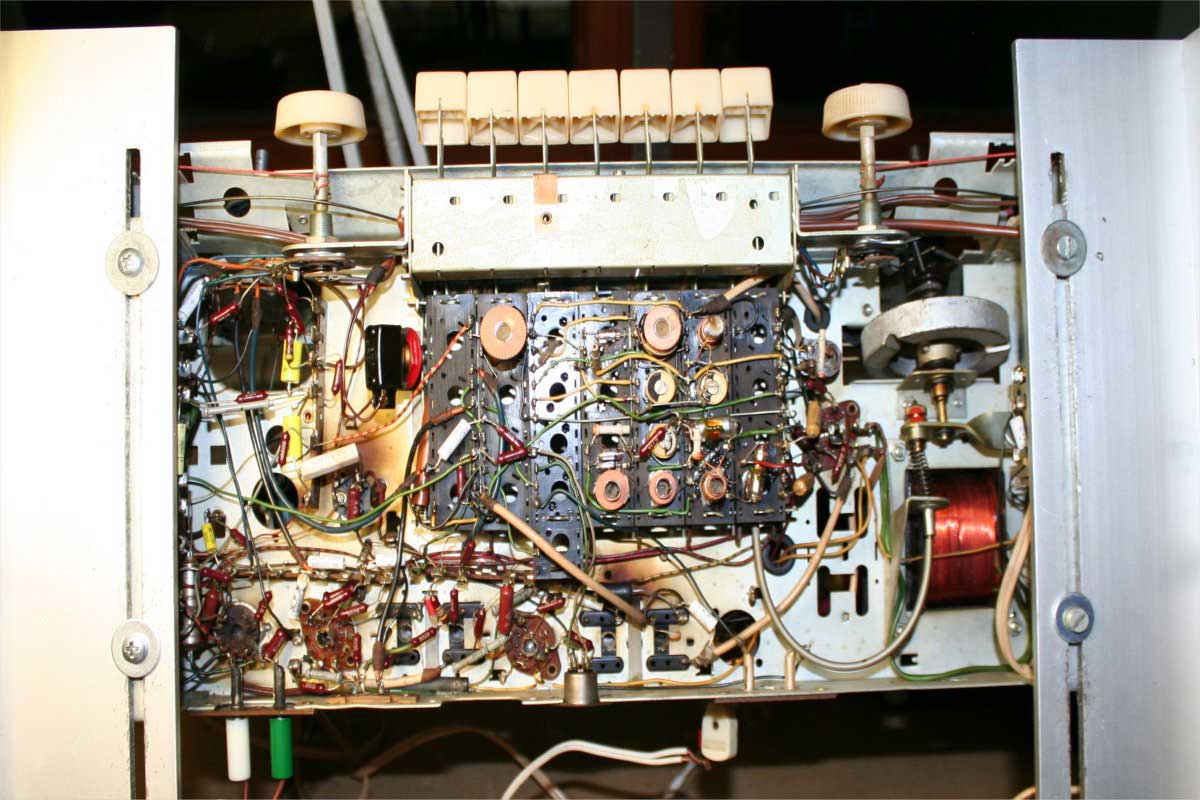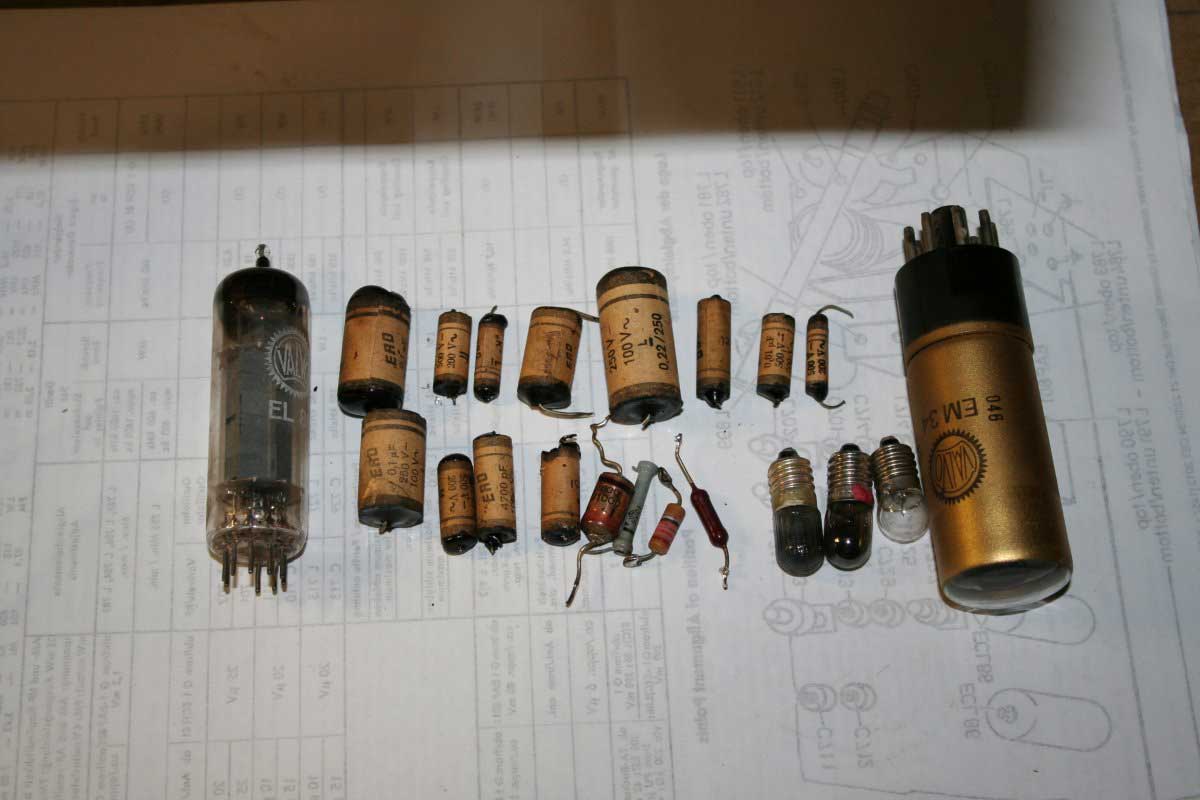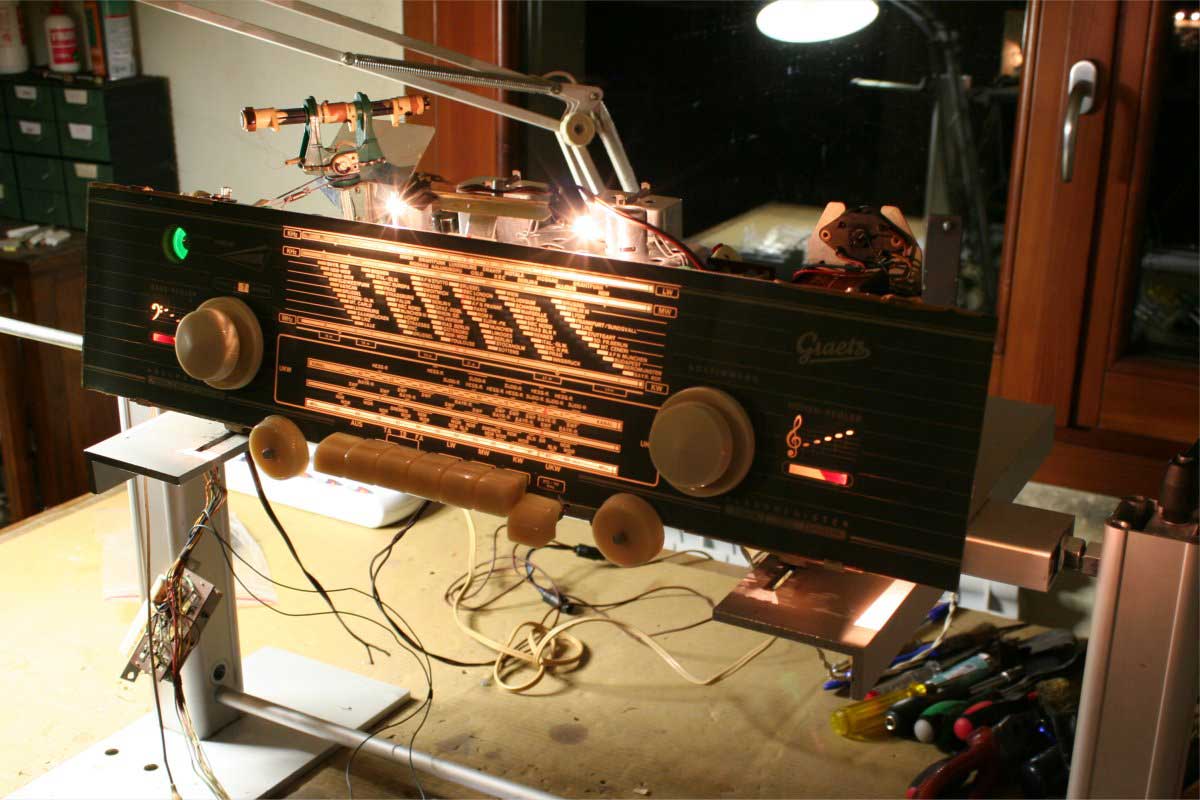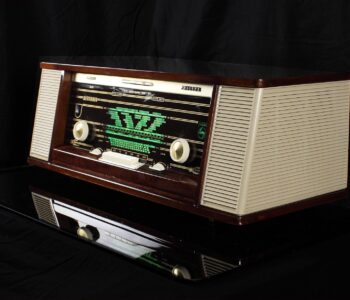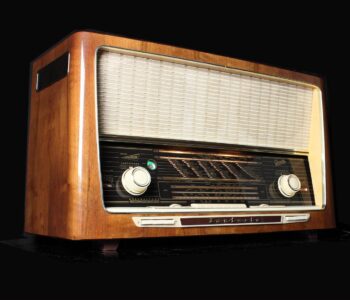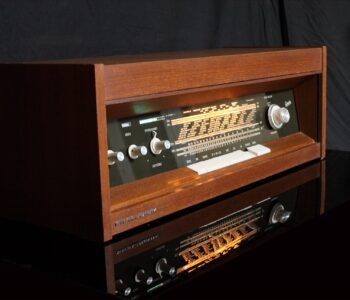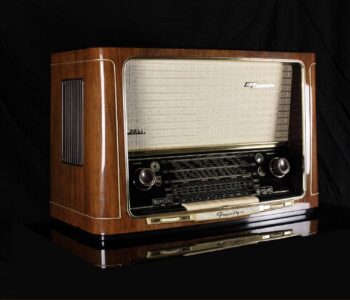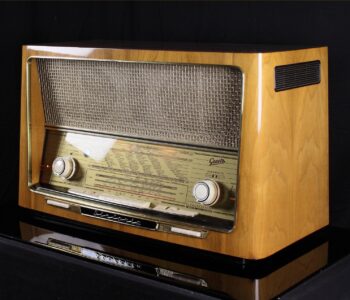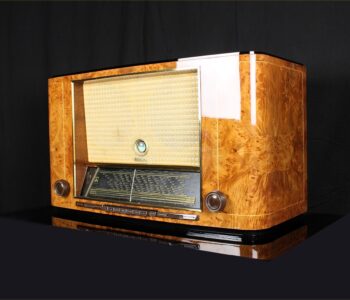 german radios - en
german radios - en
Graetz Melodia M618 – en
- by giovanni
Graetz Melodia M618
GRAETZ MELODIA M618
The Melodia M618 is the radio with the most modern design produced by Graetz in those years.
No radio in those years had a design somehow similar to this. It is of the end of Fifties that we are referring to.
This is the reason why I wanted to dedicate a page of my website to it.
Its design gave me the opportunity to take pictures of it with modern furniture. But it is when I put it among elements of colonial style that its impact became astonishing.
Warm colours, soft wood, natural sound that only tubes can give. It looked like radio and furniture were designed together.
Technically this device has everything available at the time.
Separated tone controls. Three curves set equalizer. Two frontal widerange loudspeakers, a frontal cone tweeter and a double sided flutes horn tweeter.
Class A power amplifier with the wonderful classic EL84.
Tuning is stable and sharp on every band.
This is an easy radio to find a place to, because of its reasonable measures.
All in all, a true little jewel.
-
BLUETOOTH
Bluetooth receiver embed -
MULTI PLATFORM CONNECTION
Each radio is equipped with a cable for connection to any digital device.
TUBESOUND IMPROVEMENT
- Bluetooth receiver embed - The unit is equipped with a BLUETOOTH receiver powered directly by the receiver power supply. This makes it possible to control the amplifier from any external digital device as an IPAD, a Smartphone, or a sophisticated multimedia station. So you can hear your preferred web station or your lossesless file without cables on the room. Wireless Receiver can be equipped upon requests.
- Multi Platform Connection - A customized adaptation cable to connect any digital device as Iphone, Smartphone, Laptop, CD Player etc. will be provided with this radio. This special cable suits the different impedances between the modern equipment and the receiver. Furthermore the two stereo channels flow into one without increasing the load to the input unit.
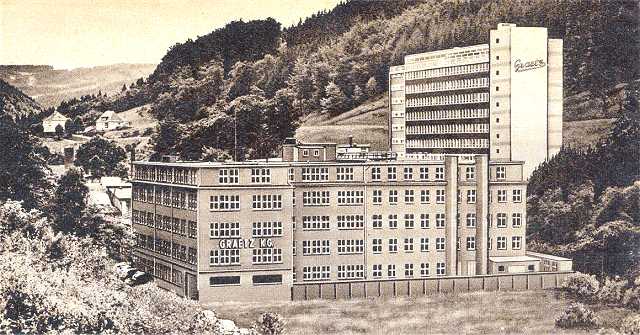
Graetz factory
HISTORY
The Ehrich & Graetz metalworks was a factory established in 1866 in Berlin by Albert Graetz (1831–1901) and the tradesman Emil Ehrich (died 1887) under the name "Lampen-Fabrik Ehrich & Graetz OHG" (E&G).
By 1897 the firm was controlled by Albert's sons, Max Graetz, and Adolf Graetz. The company grew rapidly, and in 1899 factory complexes were built in Berlin, in the United States, France, the UK, and Bombay.
Around 1910-1916 Max Graetz developed the famous Petromax Lantern. Around 1925 the factory also produced radios, and other electrical appliances under the name Graetzor.
In the Second World War, just as in the First World War, the company was part of the war industry. With the use of forced laborers from France, Russia and the Netherlands the company made huge gains in production.
At the end of April 1945 the factory was claimed by the Russian army.
In 1949 the firm became part of the "peoples" program, "VEB-VolksEigenerBetrieb" and since 1950 "VEB Fernmeldewerk, Berlin Treptow (RFFT)." VolksEigenerBetrieb, means that the factory was owned by the people for the people (Communism)
In 1948 Erich, and Fritz Graetz founded a new company in Altena, Germany known by the name The Graetz Firm, which was successor to the lost family company in Berlin. The new company produced mainly radios and televisions.
In 1961 the company was then sold to Standard Elektrik Lorenz (SEL) AG, but since 1987 has been to the present owned by the Finnish company Nokia.
MAIN FEATURES
Year of production: 1958/59
Superheterodyne IF 468/6750
6 AM Circuits
10 FM Circuits
Wavebands:
Medium Waves(OM), Long Waves (OL)
Short waves (OC), FM (UKW)
2 Elliptical mid-woofer
1 Cone mid-tweeter
1 Double flute Tweeter
Dimensions (LHD): 25.4 x 14.6 x 10.6 inch
Net weight: 30 lb 13.4 oz
6 Tubes:
ECC85 ECH81 EF89 EABC80 EL84 EM34

TONE CONTROL WITH LEVEL INDICATION
The tones control system is very efficient. Above the large tone control knobs there is a band that lights up gradually indicating the emphasis on the band on which it acts.
AERIALS
Inside the cabinet there is a dipole for FM reception and a ferrite rotating aerial for AM reception.
Ferrite aerial can be rotated from the outside to achieve a perfect tuning of the device in the AM.
In this picture you can see the rotation mechanism, and the aerial position indicator.
The reception sensitivity with internal aerials is very good. This unit was in fact produced when there were not many radio stations, and those available were far from each other.
Using an external aerial sensitivity is further increased.


SEPARATE CONTROL TUNING BETWEEN AM AND FM
The tuning system is another gem.
The unit is equipped with mechanisms that keep AM and FM bands separate.
The tuning knob is single, but a selector switch commutes between cable systems (all steel made) and pulleys dedicated to each band.
The movement is transferred to both mechanisms with a system of pulleys and separated gears.
TUNING INDICATOR
The magic eye has of course been replaced.

LOUDSPEAKERS
The loudspeakers group consists of 4 elements.
Two full range speakers in the front side reproduce the mid-bass frequencies. A cone tweeter for treble in front.
An Isophon horn tweeter oriented toward the back. The emissions are controlled by two waveguides that carry sounds on a output flute exit each side.
In this way Graetz is able to obtain emission of higher frequencies constant on all three sides of the unit.
The first objects you meet on the left is the magic eye indicating the perfect tuning of each station and below the bass tones indicator.
Then you can see the volume control knob (with incorporated loudness).
On the same axis there is the ferrite aerial orientation knob.
The Long, Medium, and Short Wave AM scale and the FM scale.
On the right the tuning knob and further the treble tone indicator.
Below we see the bass control, the Off, record player, recorder , Ferrite Aerial buttons and those for Long, Medium, Short and FM Wave bands, and further the treble control knob.
Further below we find the three buttons on the Abschaltung (Exclude) group:
Aussen-L(autsprecher) > External loudspeaker
Mag (Isches) -Auge > magic eye
Raumklang > Center speaker
and the three buttons on the group Klangregister (Register music), these are very intuitive and are respectively:
Sprache > Voice
Solo > Single instrument
Orchester > Orchestra

REAR SIDE
Output for external speakers.
Socket for recorder (tonbandgerat).
Turntable input (Tonabnehmer)
AM and FM aerial inputs and ground socket
RESTORATION STEPS
THE USUAL AMAZING LAST IMAGE
